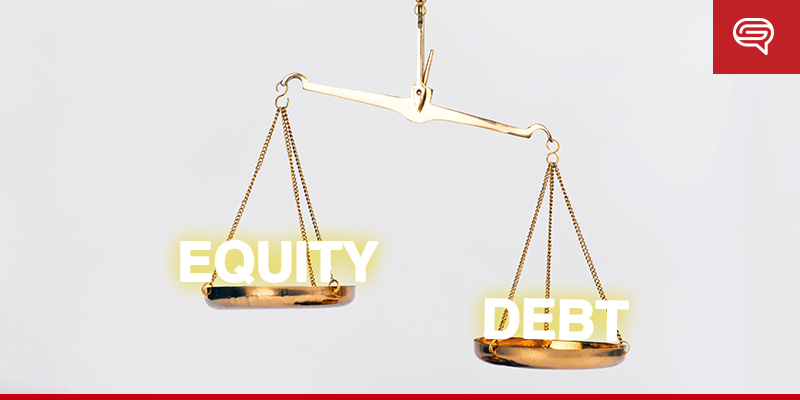
Companies often face a pivotal decision: how to raise capital. Financing is crucial for business growth and sustainability; two primary options companies explore are debt financing and equity financing.
Need a Presentation Designed?
Click Here To View Our Amazing Portfolio
Understanding the nuances of these options is vital for entrepreneurs and business leaders as they navigate the complexities of financial management.
Debt Financing
Debt financing involves securing funds by borrowing from external sources, with an obligation to repay the borrowed amount with interest. It’s akin to taking out a loan, and businesses can tap into various forms of debt financing to meet their capital needs.
Types of Debt Financing
Bank Loans
Traditional bank loans are a common form of debt financing, offering businesses a lump sum amount with a predetermined repayment schedule and interest rate.
Bonds
Companies can issue bonds as a means of raising capital. Bonds are debt securities that investors purchase, essentially lending money to the company in exchange for periodic interest payments and the return of the principal amount at maturity.
Lines of Credit
Businesses can establish lines of credit, providing them with a flexible borrowing option. They can draw funds as needed, up to a predefined limit, and repay accordingly.
Pros and Cons
Advantages of Debt Financing
Debt allows companies to access capital without diluting ownership. Interest payments are tax-deductible, providing a financial advantage.
Risks and Challenges
The burden of regular debt payments can strain cash flow. Excessive debt can lead to financial instability, and defaulting on payments may result in grave consequences, including bankruptcy.
Equity Financing
Equity financing involves selling ownership stakes in the company to investors. Investors become shareholders, acquiring a portion of the company and potentially participating in its decision-making processes.
Types of Equity Financing
Angel Investors
Individual investors, known as angel investors, provide capital to early-stage businesses in exchange for ownership equity.
Venture Capital
Venture capitalists are professional groups that invest in startups and small businesses in exchange for equity. They often bring expertise and guidance along with their financial contribution.
Initial Public Offering (IPO)
Companies can go public by offering shares through an IPO, allowing them to raise substantial capital by selling ownership stakes in the stock market.
Pros and Cons
Advantages of Equity Financing
Equity financing does not entail regular repayments, providing businesses with flexibility. Investors share the risks and losses, and successful ventures can have substantial returns for the company and its investors.
Risks and Challenges
Dilution of ownership can mean a loss of control for the founders. Investors often demand a say in company decisions, and securing equity financing can be time-consuming and complex.

Key Differences Between Debt Financing and Equity Financing
Nature of Funds
Debt involves borrowing funds that founders must repay, while equity entails selling ownership stakes in the company.
Repayment
Debt requires fixed payments with interest, whereas equity involves profit sharing and potential dividend payments.
Control and Ownership
Debt allows companies to retain control, while equity involves sharing control with investors.
Risk and Reward
Debt comes with the risk of bankruptcy, while equity offers the potential for higher returns but involves sharing the rewards with investors.
Choosing Between Debt Financing and Equity Financing
Factors to Consider
Business Stage and Growth Plans: Startups may prefer equity financing for flexibility, while established companies might opt for debt for stability.
Risk Tolerance
Companies with a higher risk tolerance and growth potential may lean towards equity financing.
Cost of Capital
Assessing the overall cost, including interest rates and potential returns, is crucial in decision-making.
Need a Presentation Designed?
Click Here To View Our Amazing Portfolio
Deciding between debt financing and equity financing is critical in a company’s financial strategy. Each option has advantages and challenges, and the choice depends on various factors, including the company’s stage, growth plans, and risk appetite.





